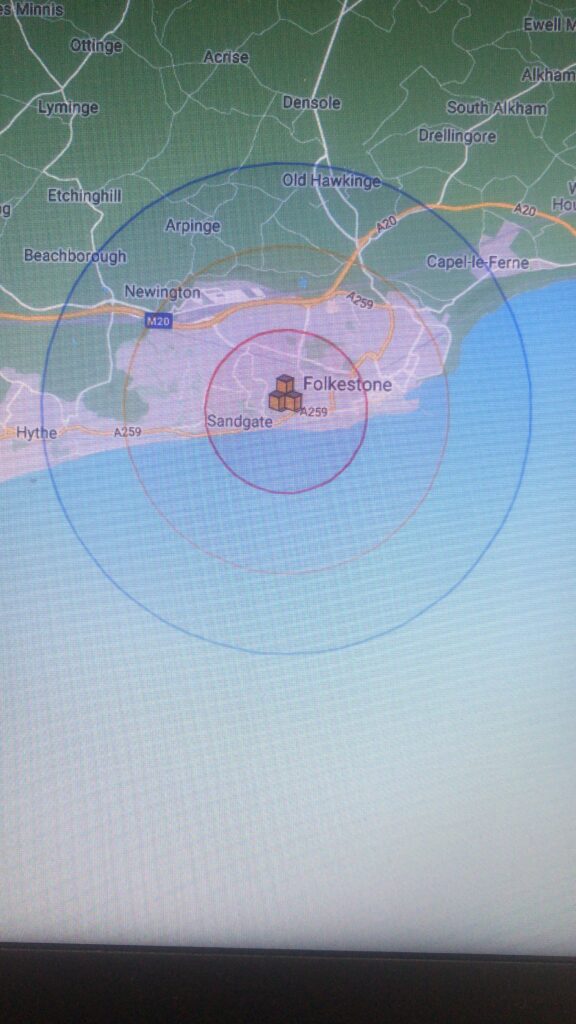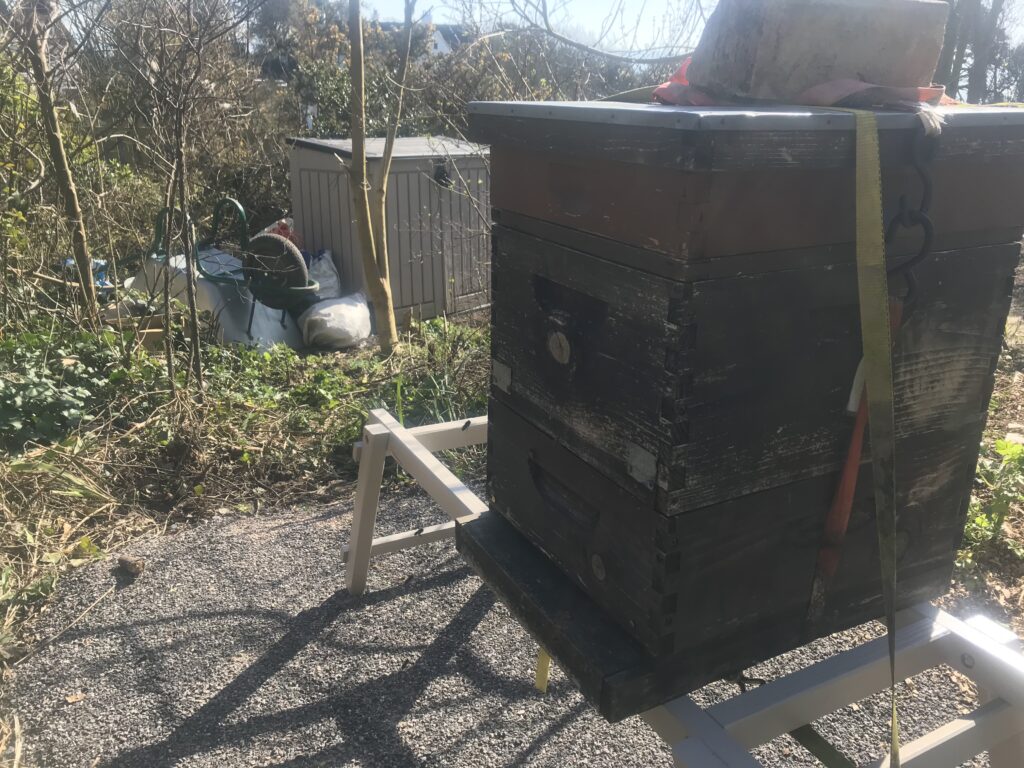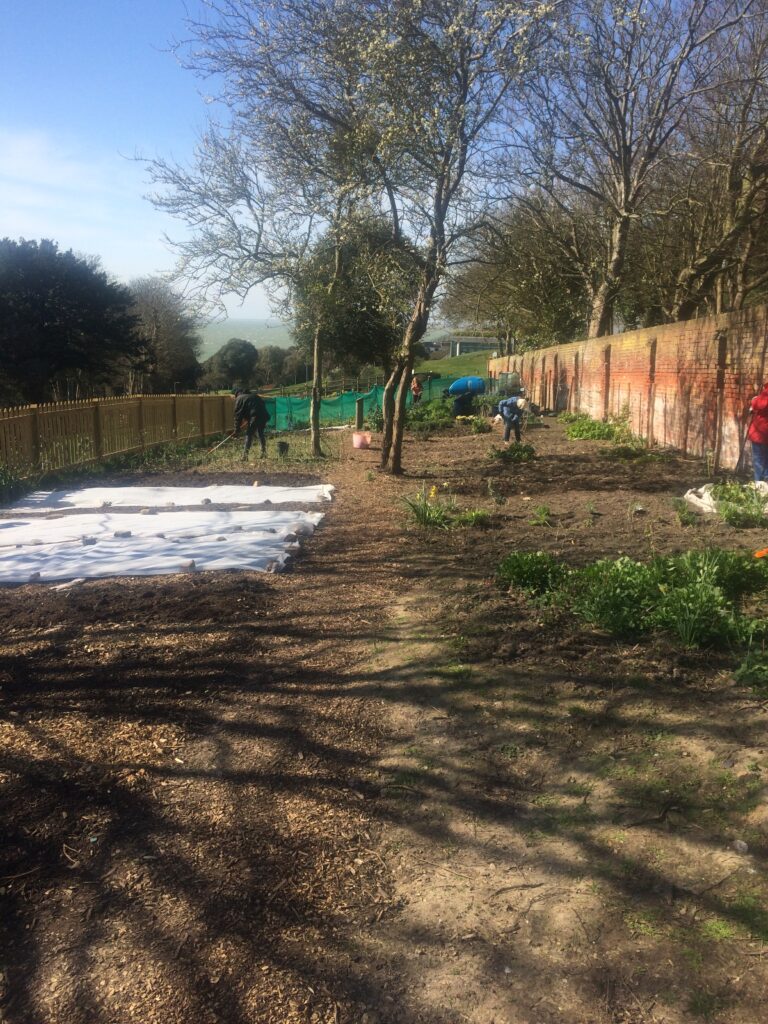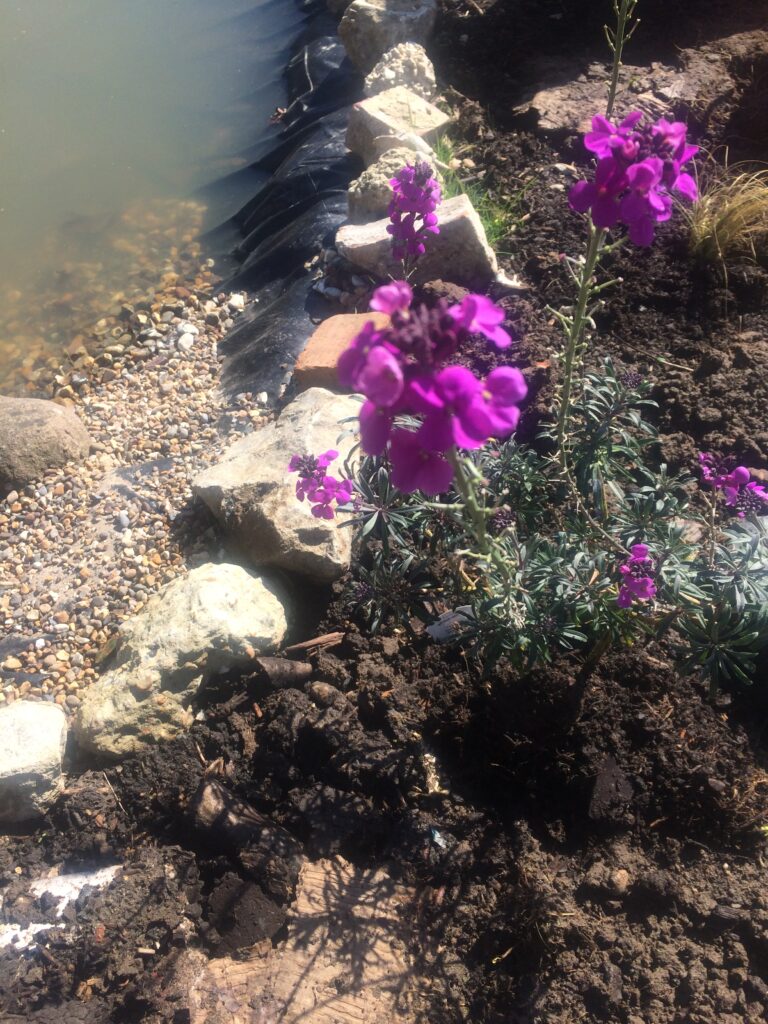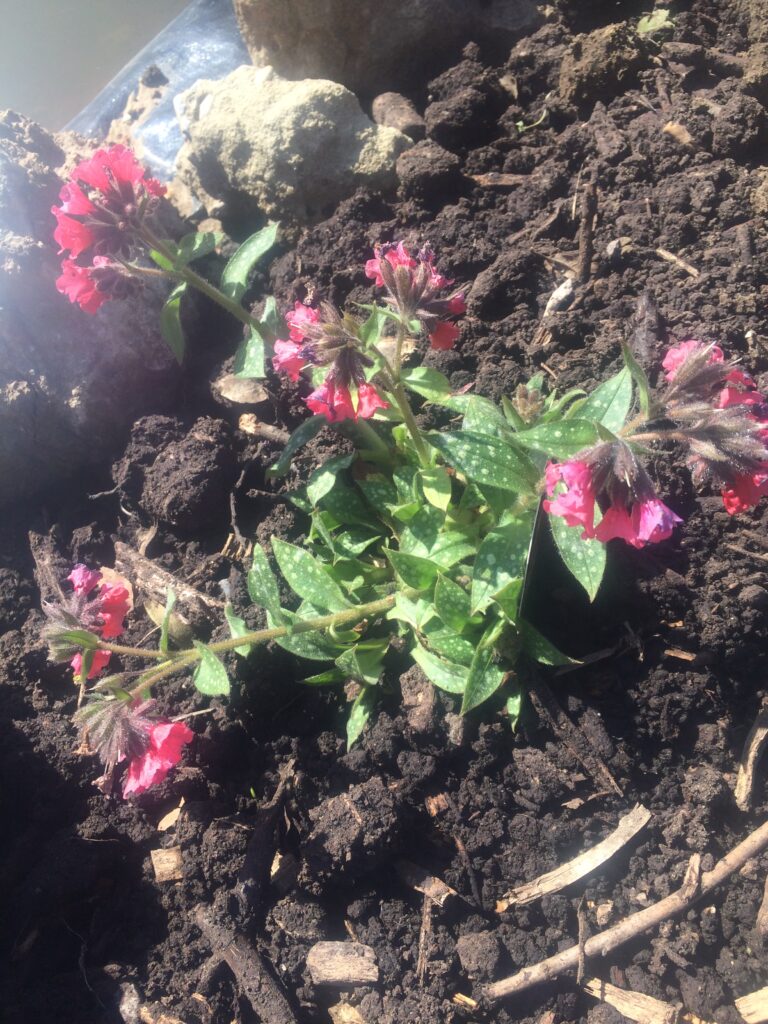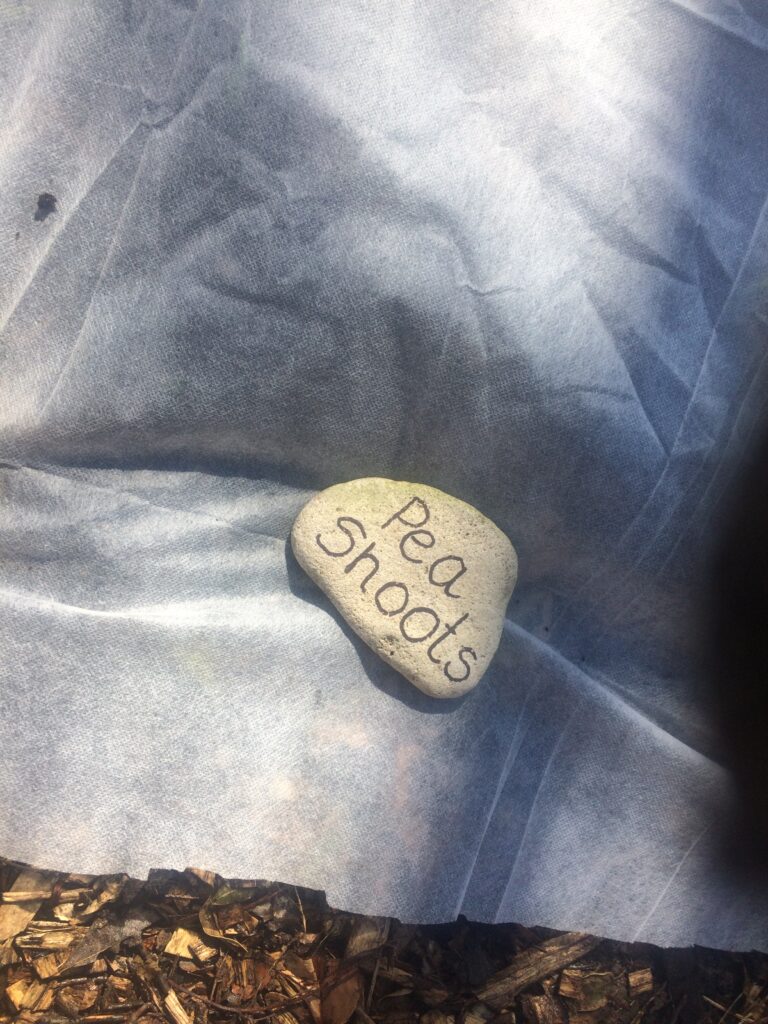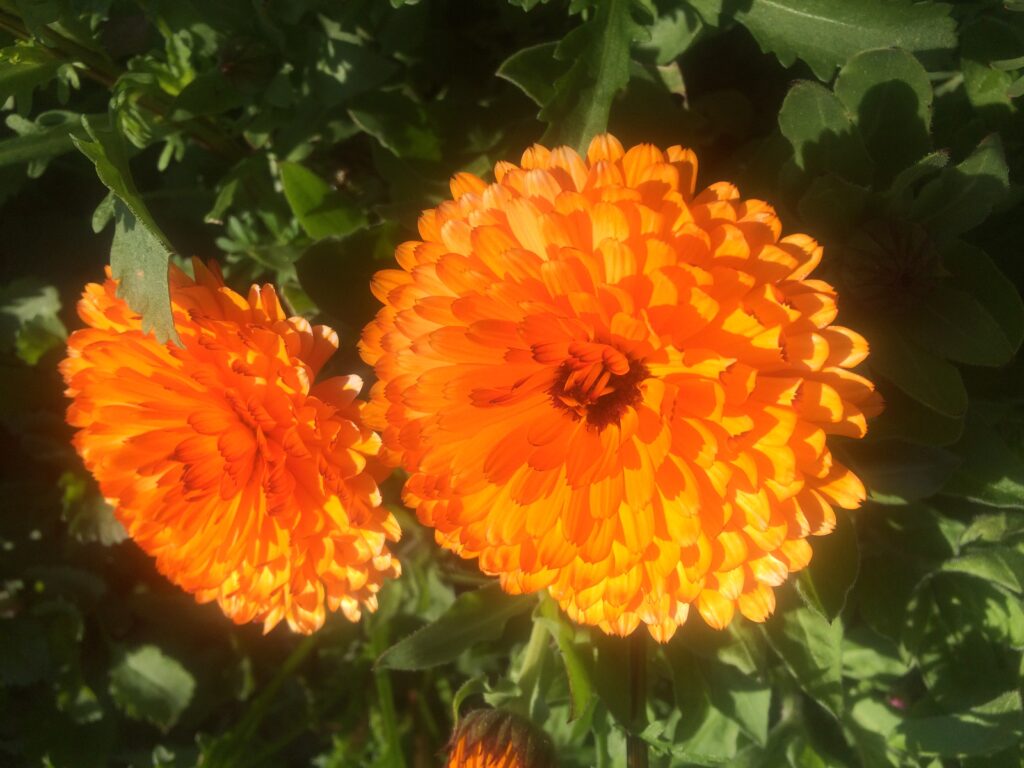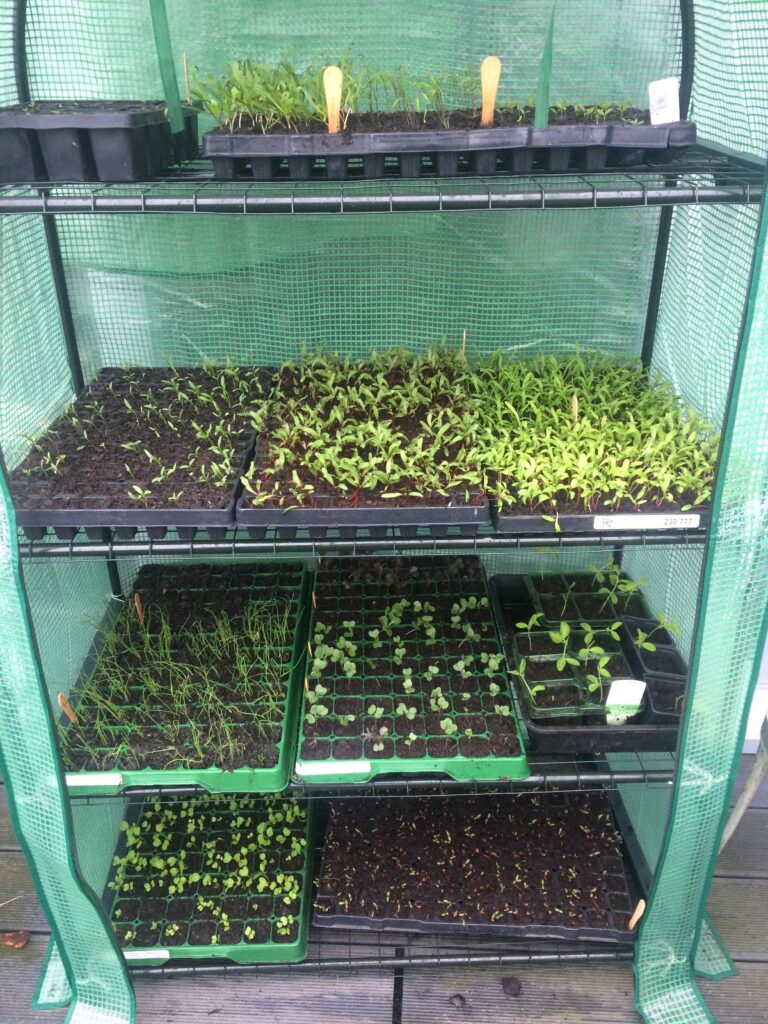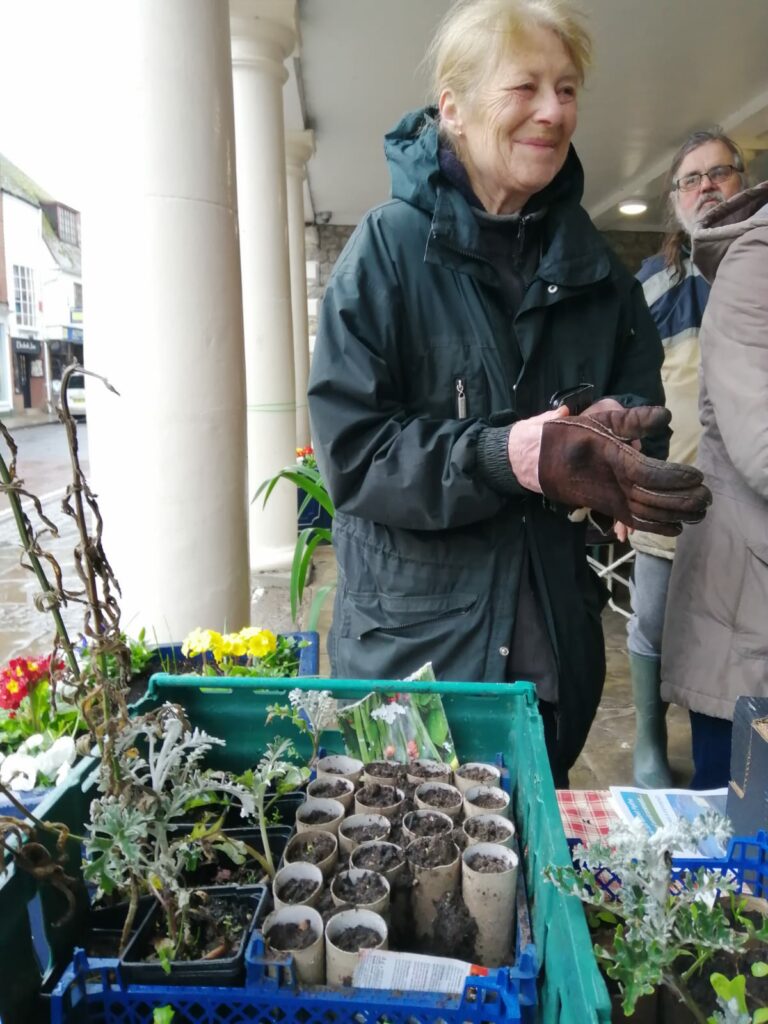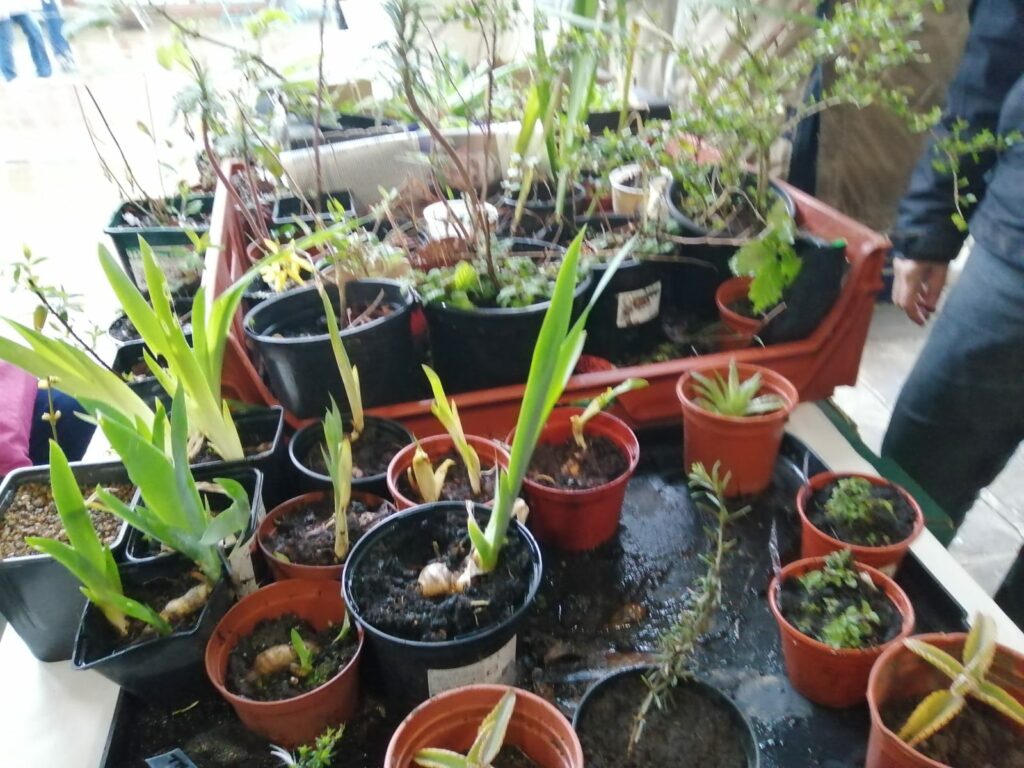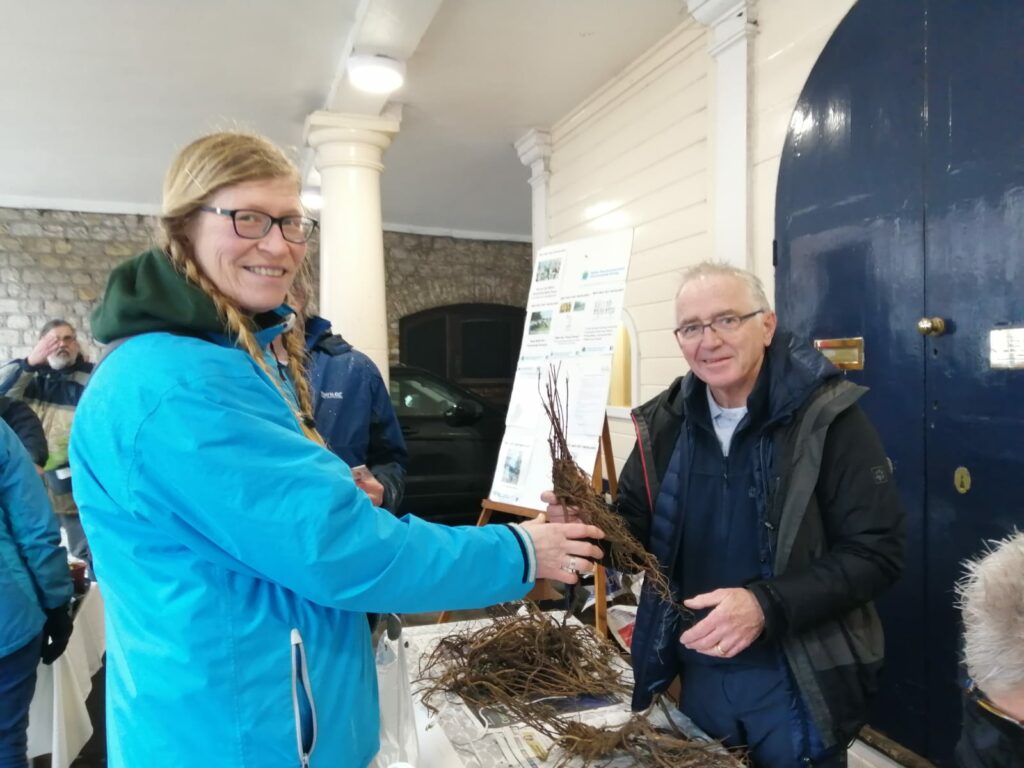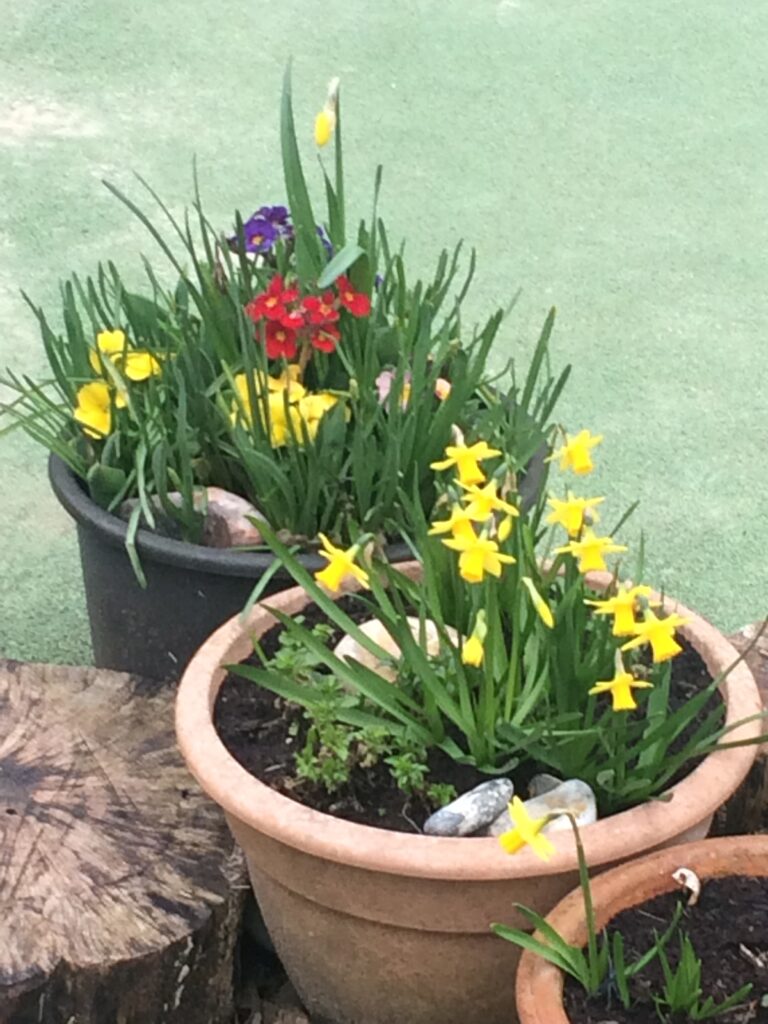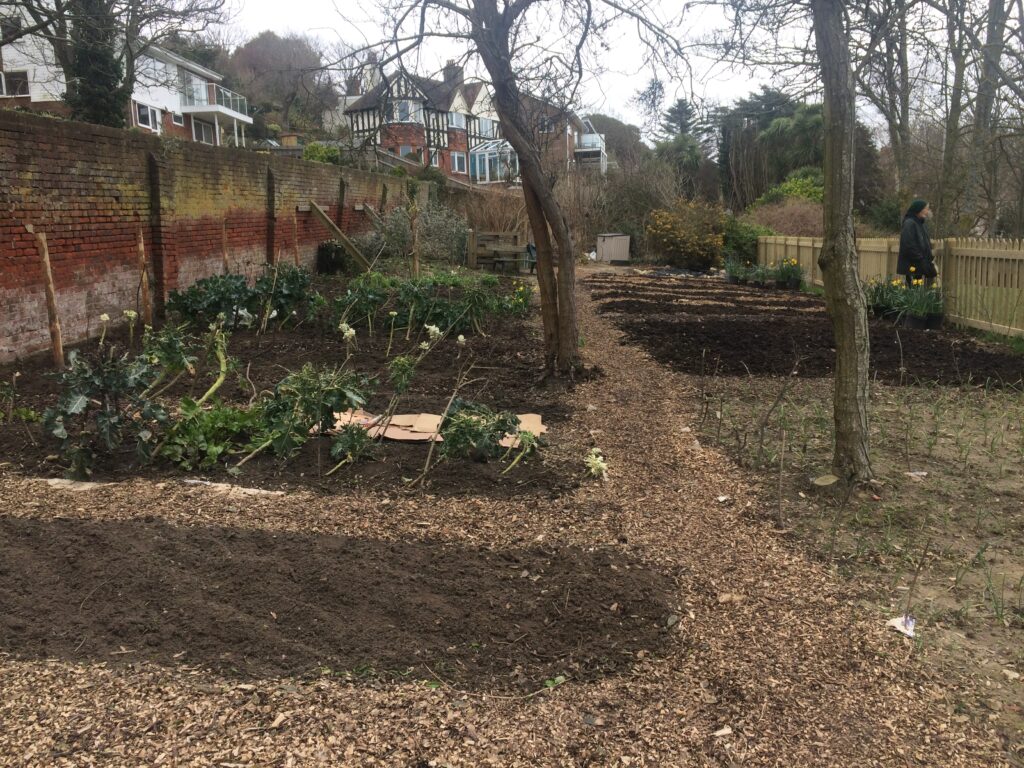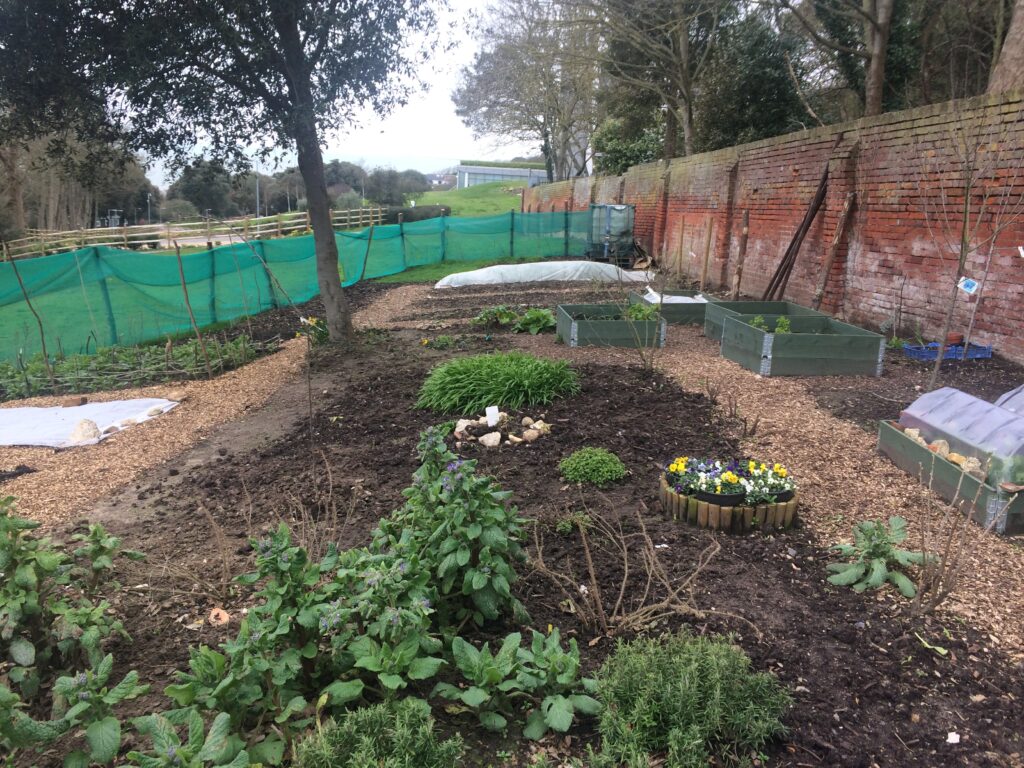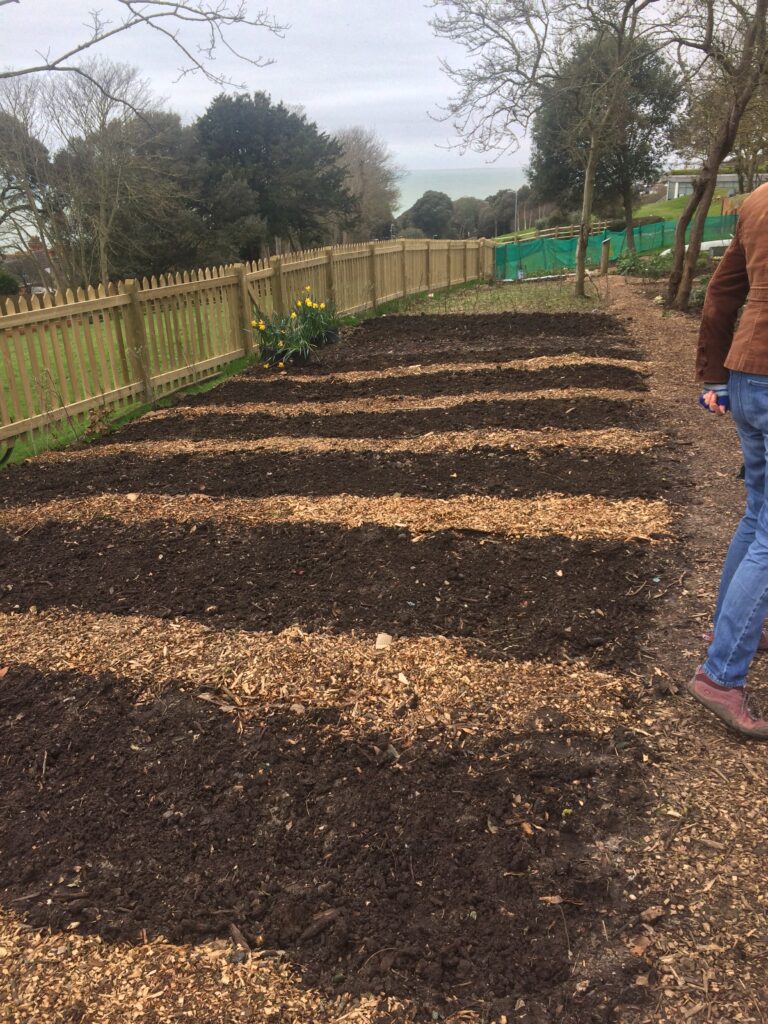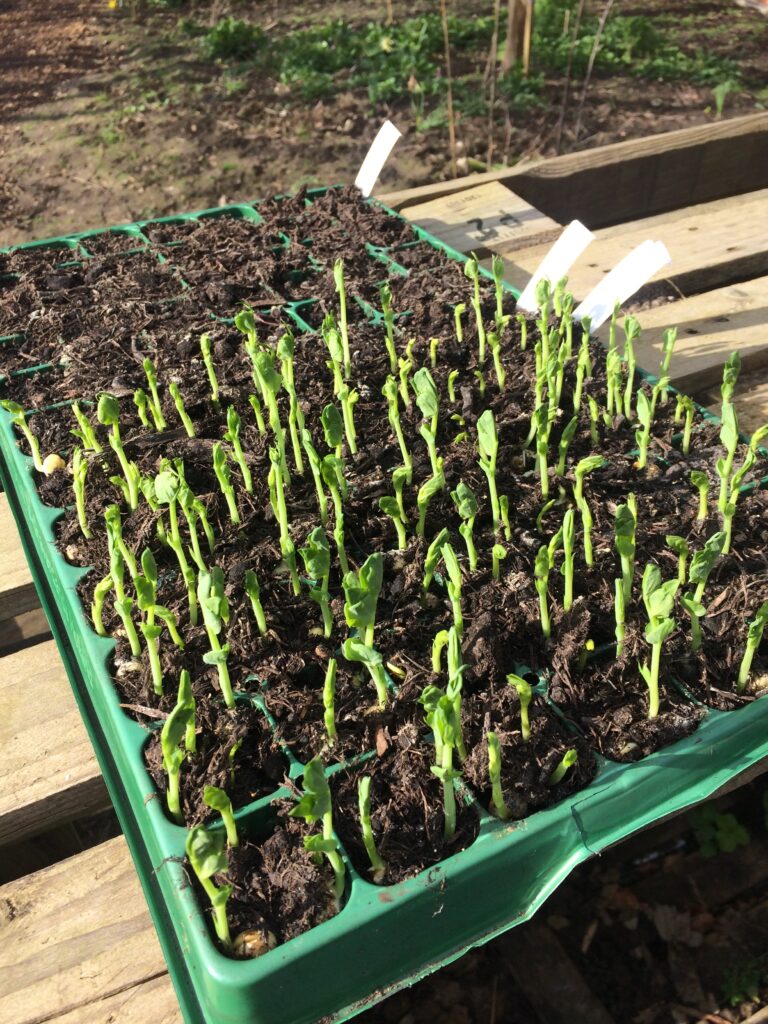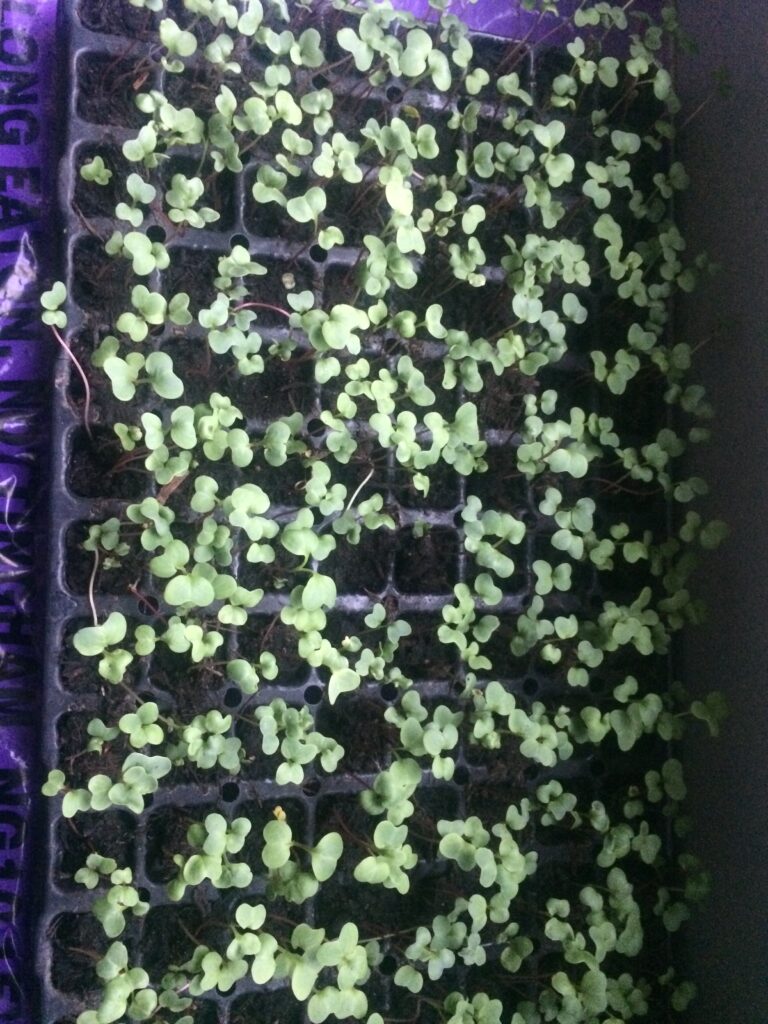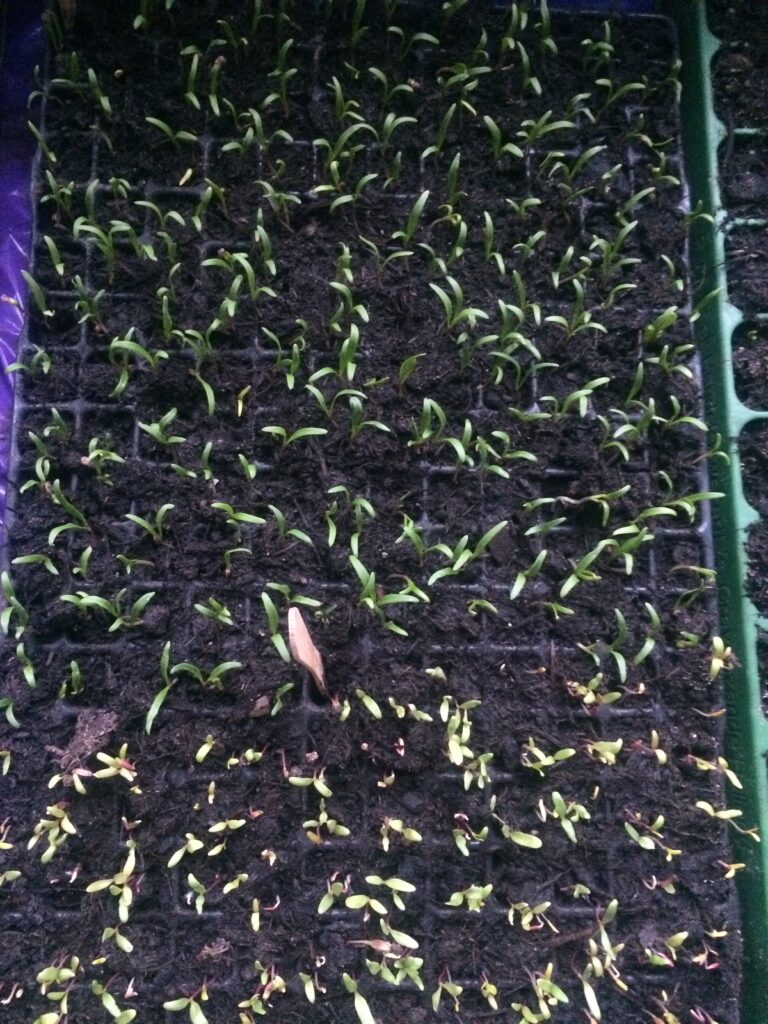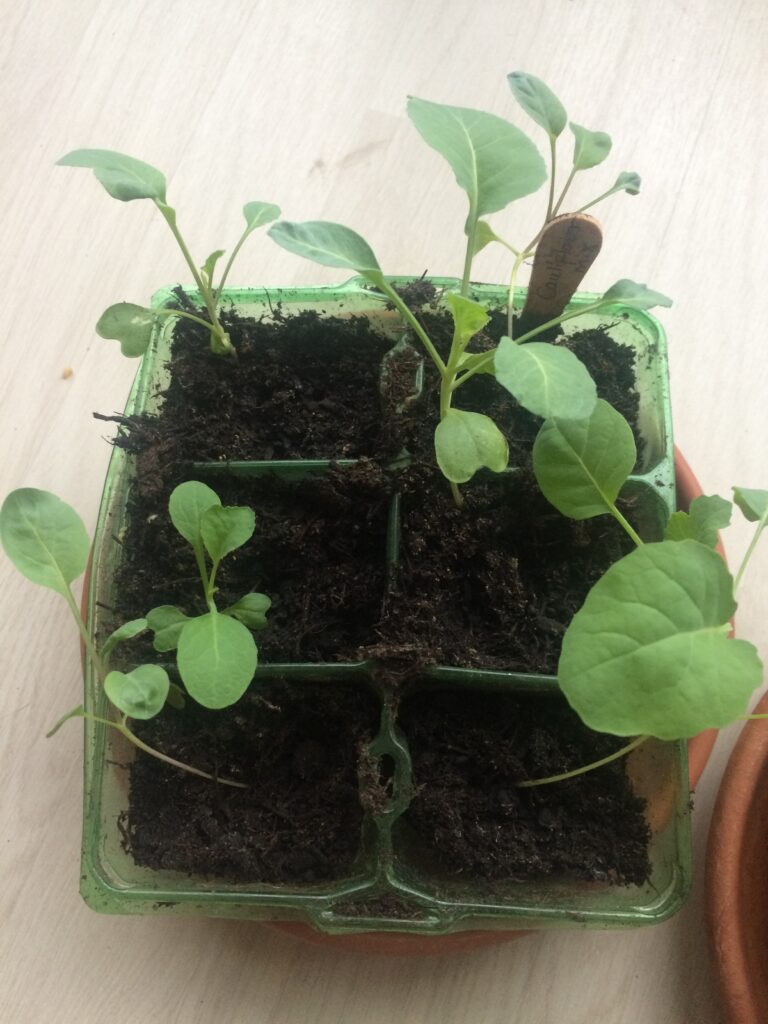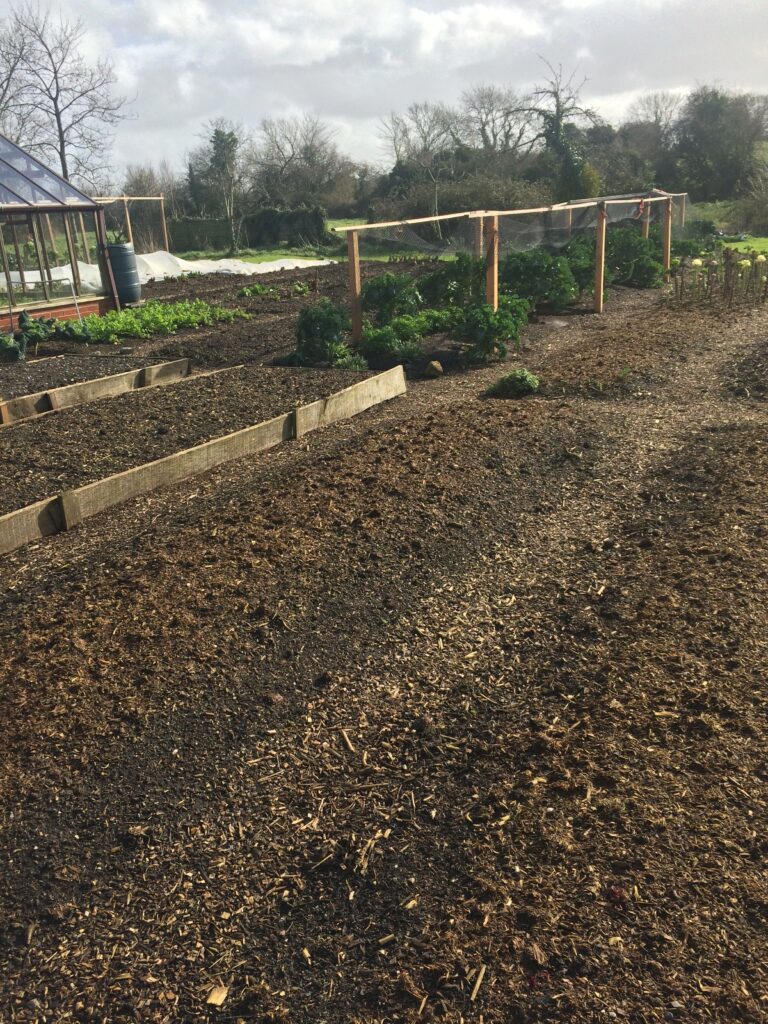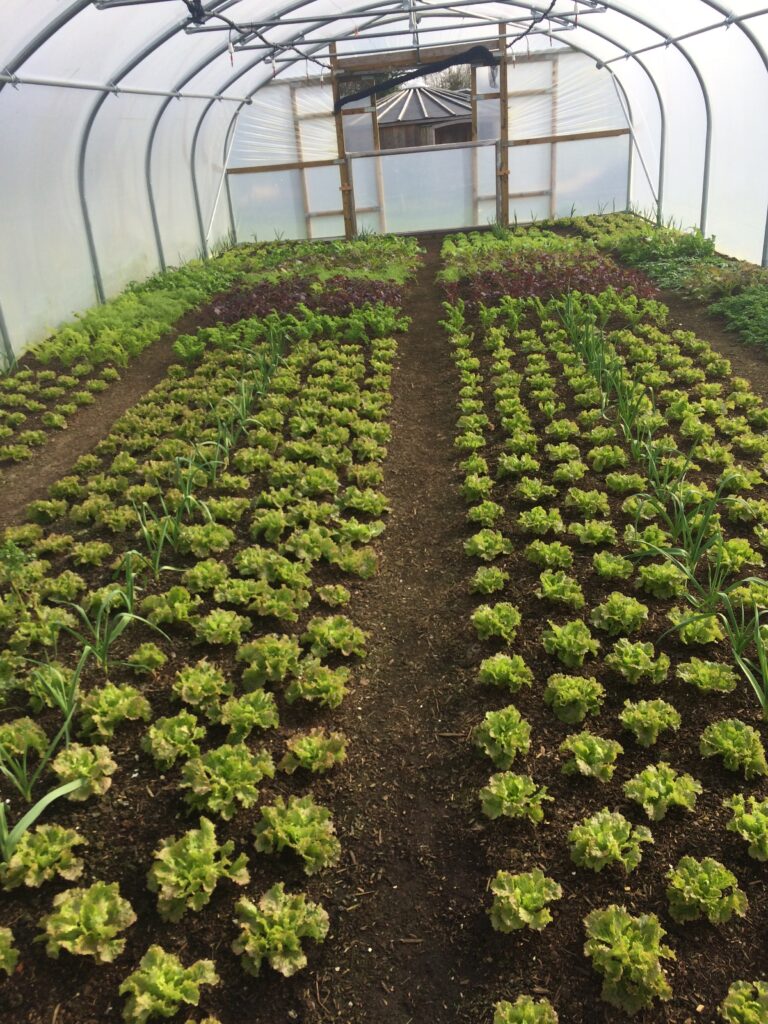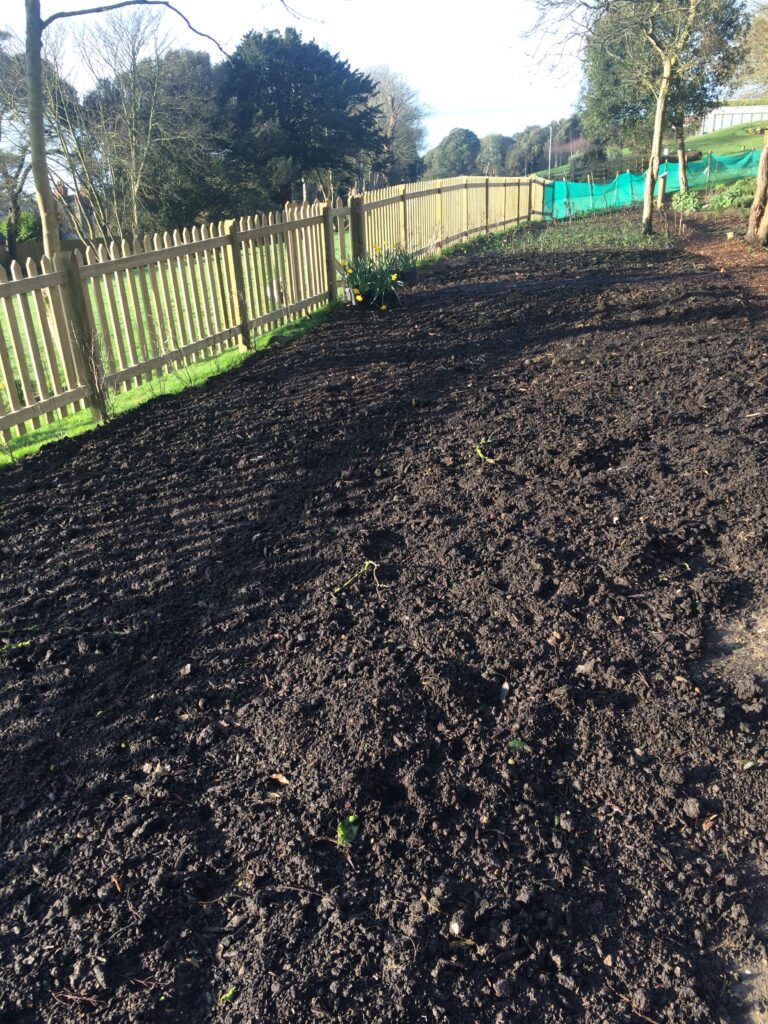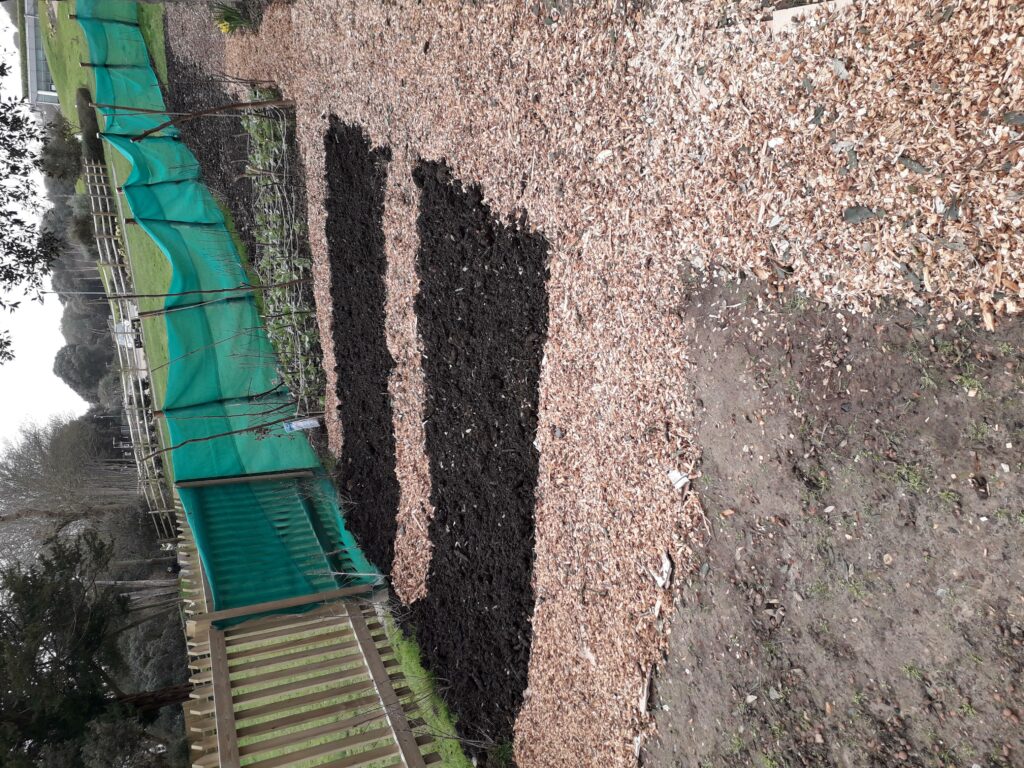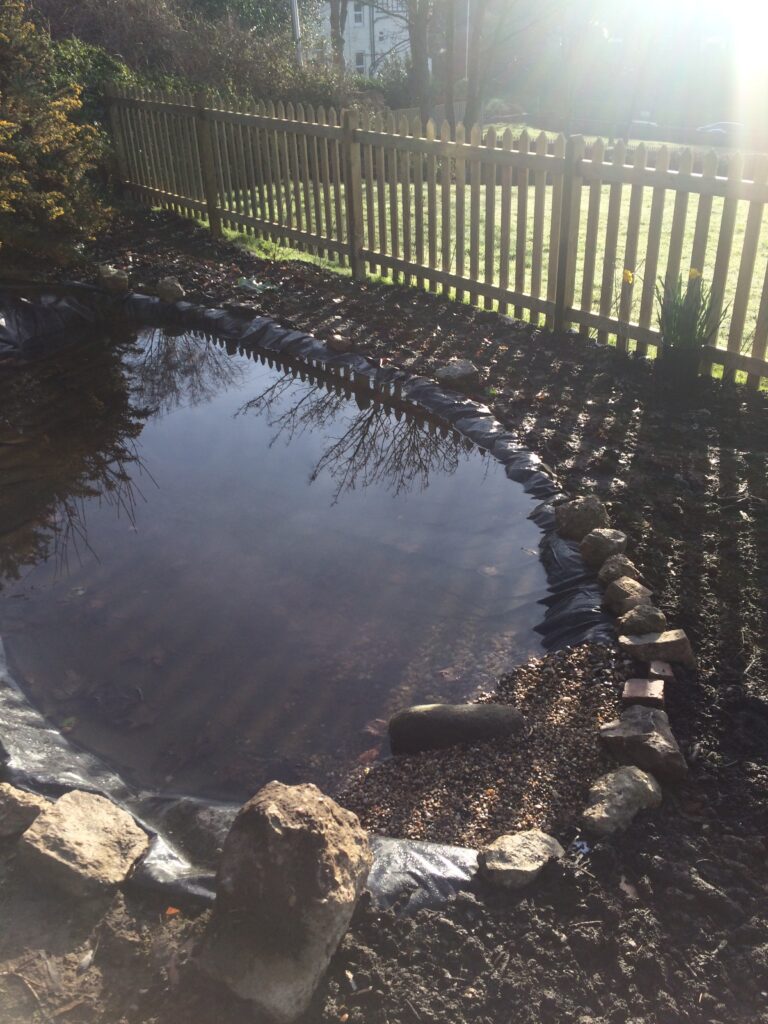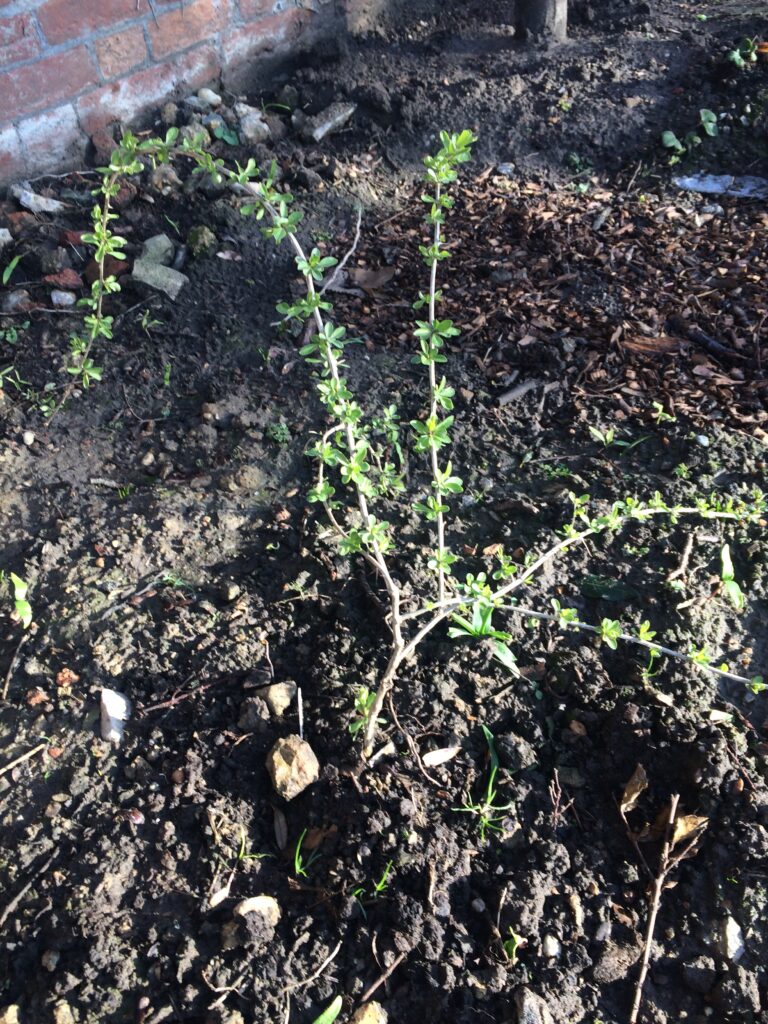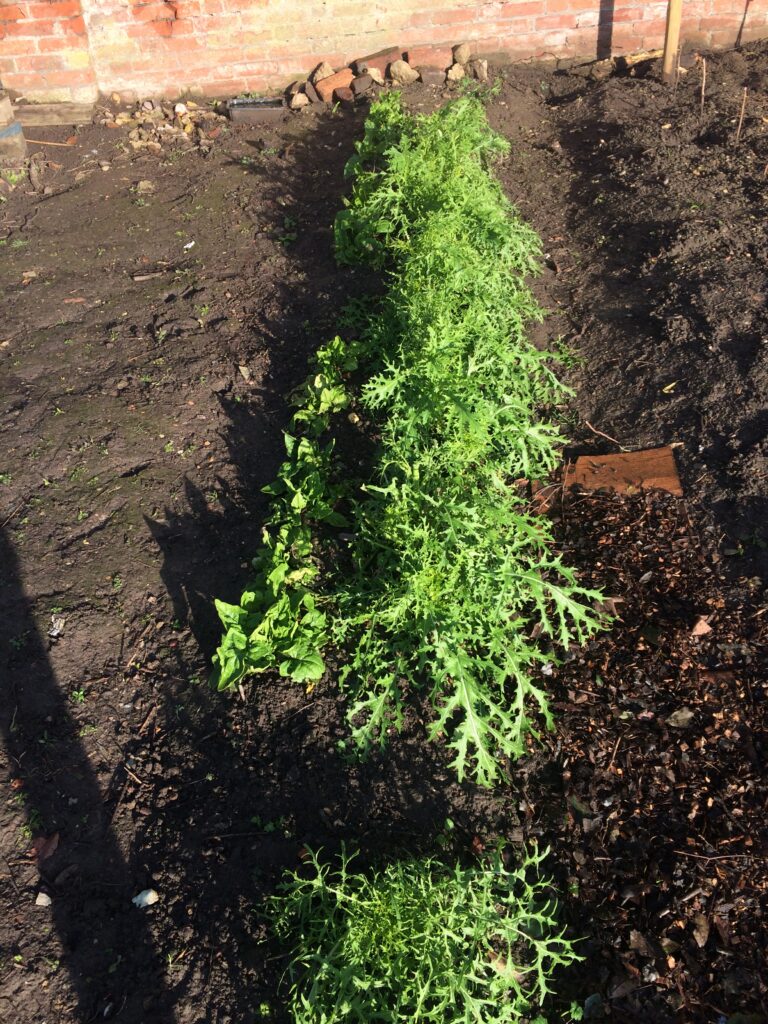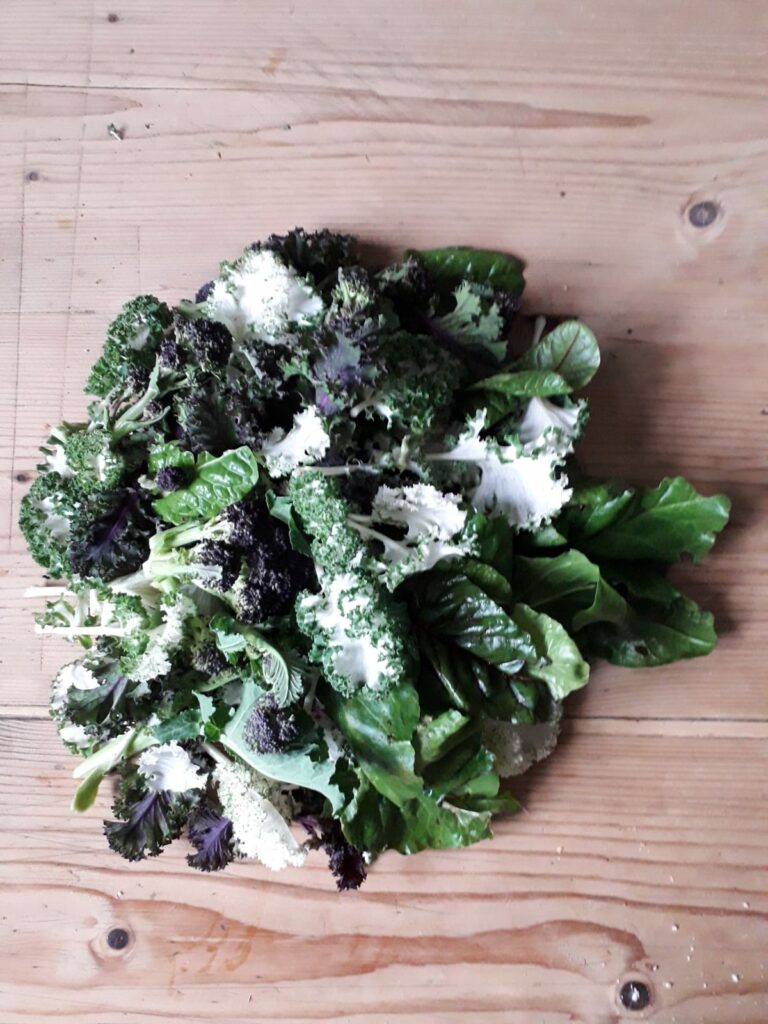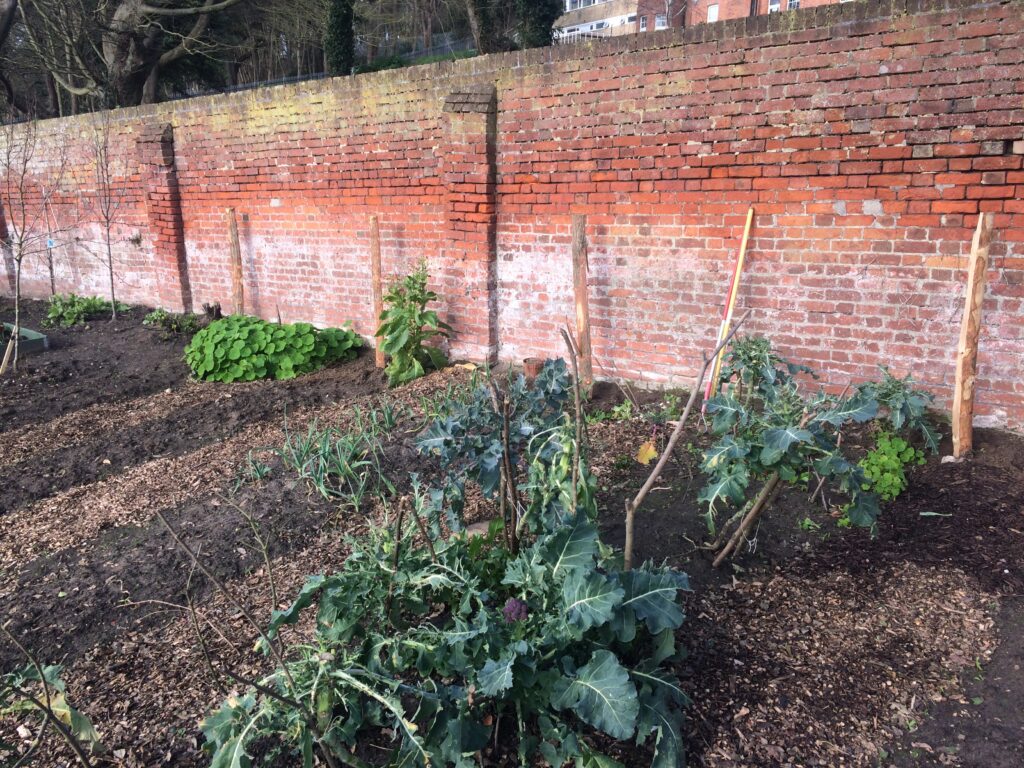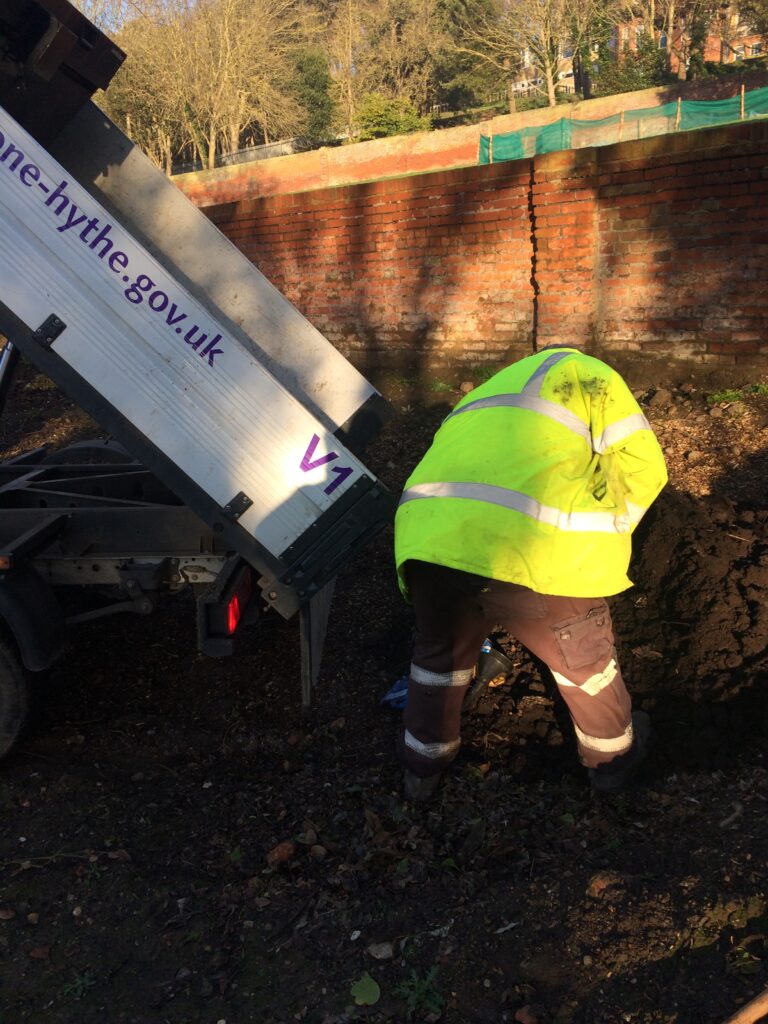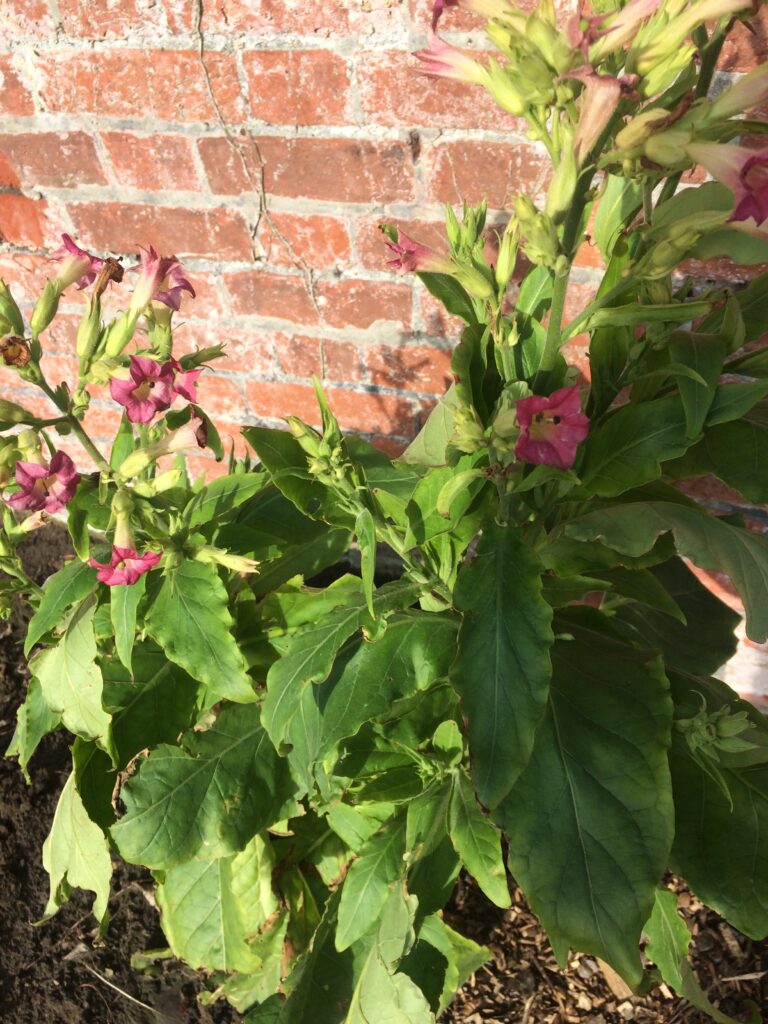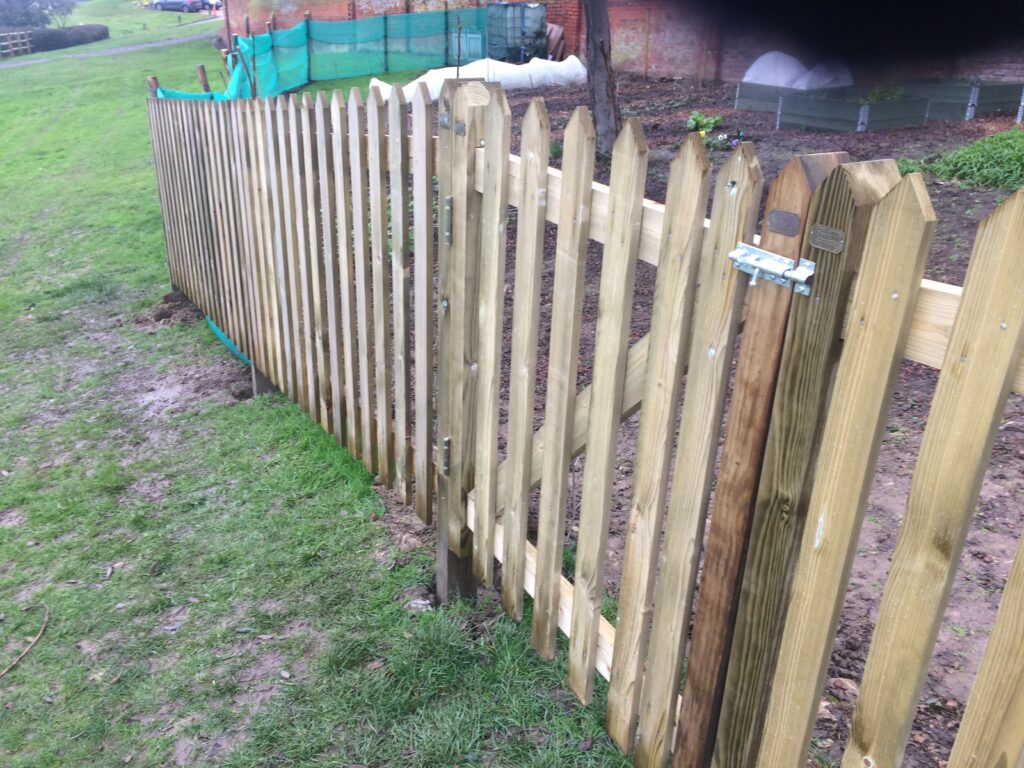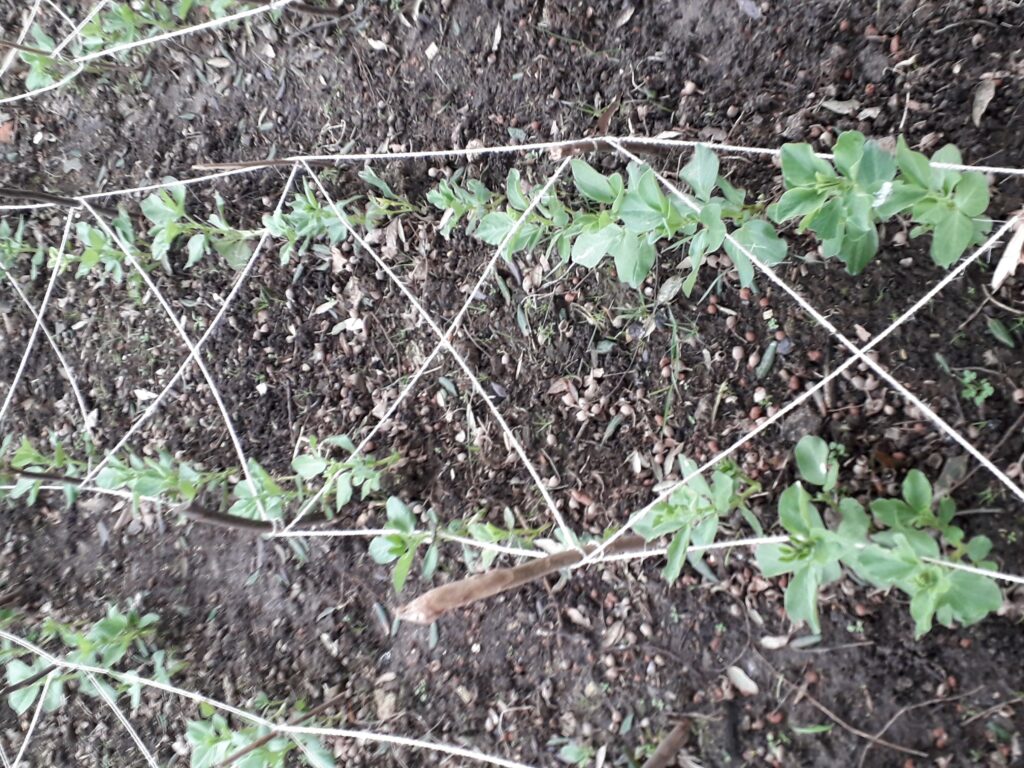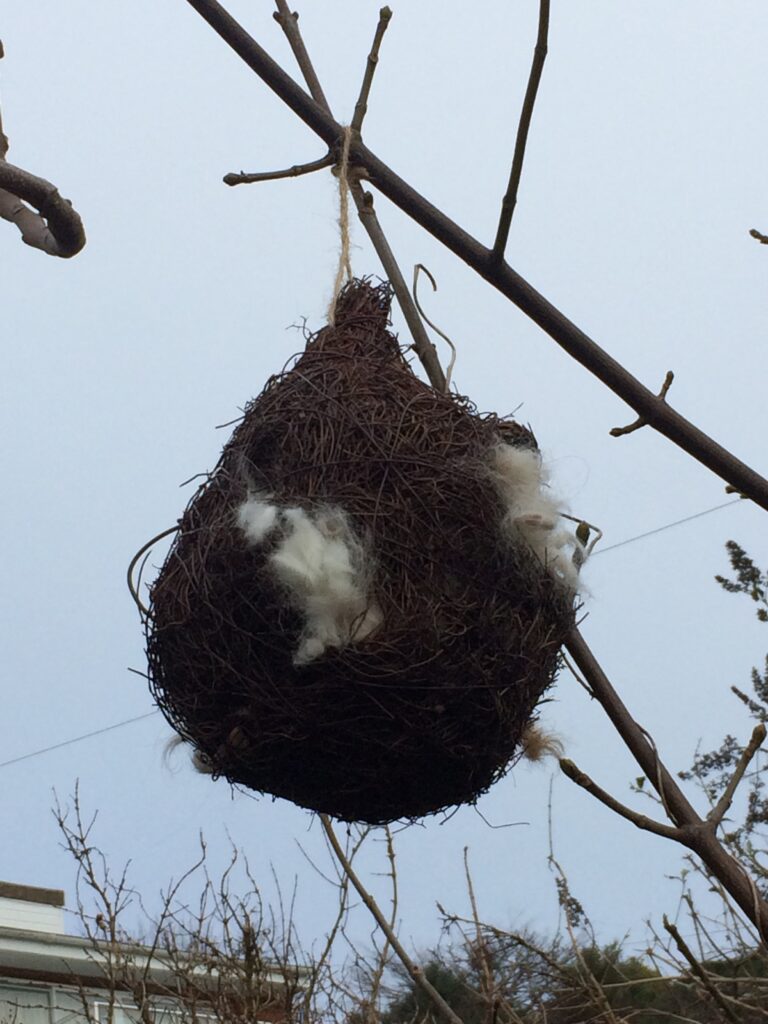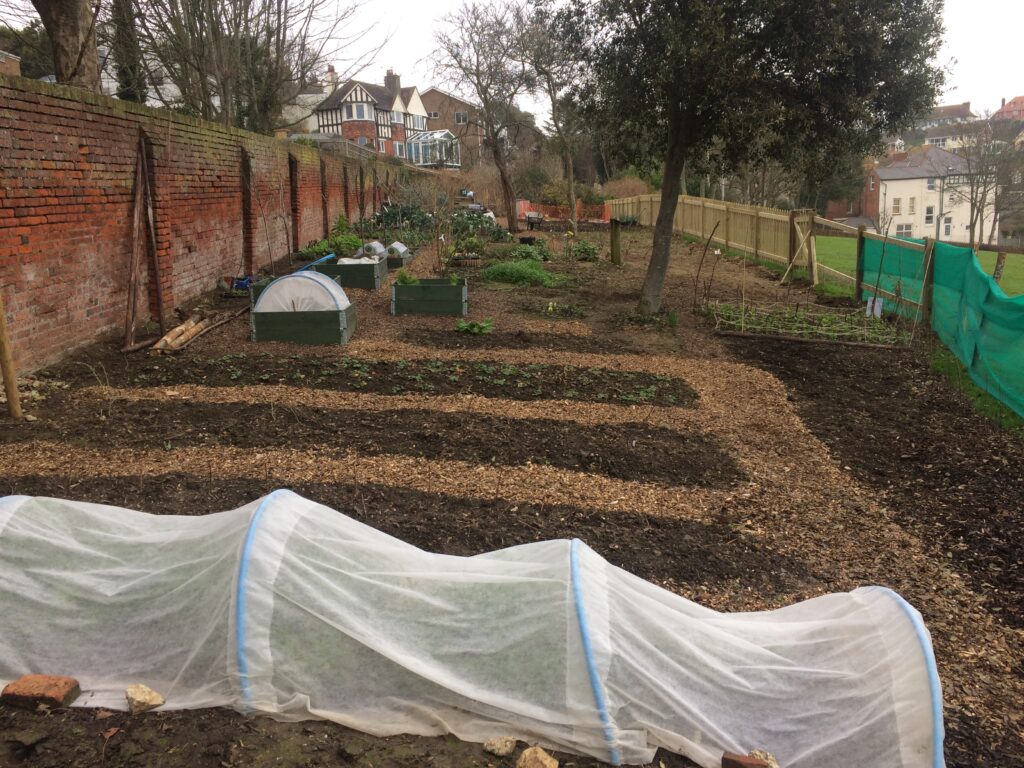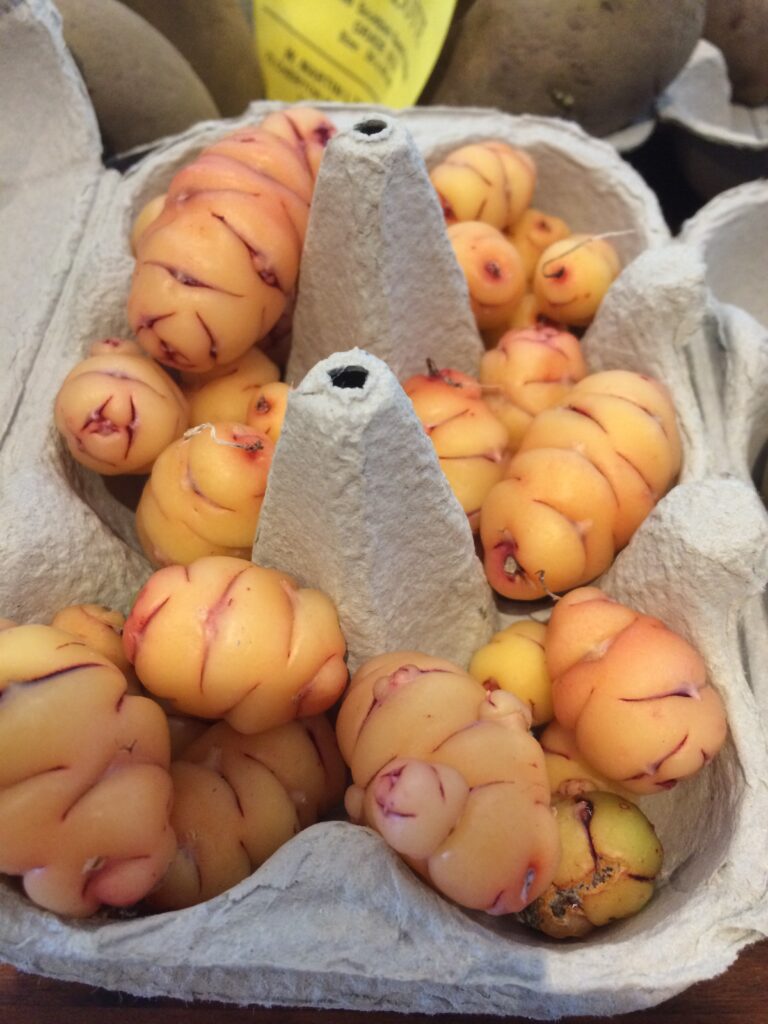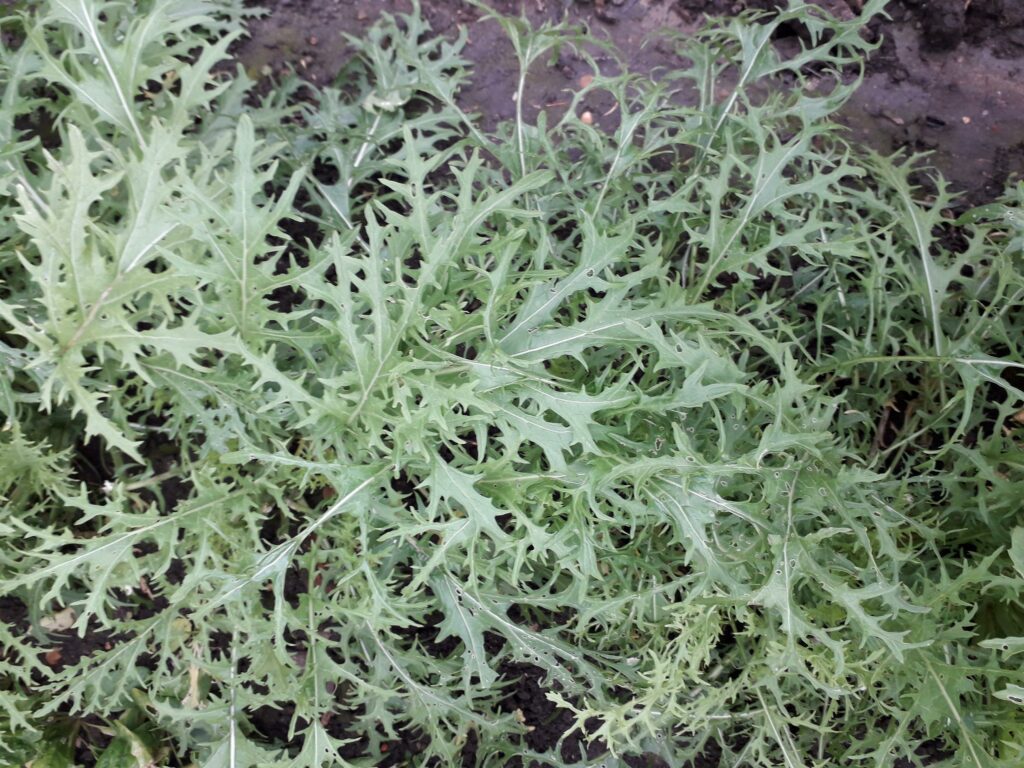When it was announced by the government that there were to be no gatherings of more than two people it seemed that the virus was going to stop the Community Garden from making any more progress for a while…. However we have a great communication system, and with the use of photos, videos and WhatsApp, we take it in turn to go to the garden as part of our exercise regime. Calabrese, cabbages, and kale for salad leaves got planted; carrots and parsnips got their first sowing of the year. Dill, parsley and coriander seedlings got potted on, ready to be planted out in a few more weeks. Time seems to be racing on already, and it seems hard to believe it will be April next week, and the clocks have just gone forward. With April will come the first sowings of the warmer loving plants like the courgettes, beans, cucumbers and basil, so much to do.
It seems that being confined to home, everyone is having a bit of a sort out either in the garden or the home, and we were left some plants, seeds, and a wheelbarrow. Thank you Maggie, thank you Peter!
Just as the restrictions came into force, Ray, our chief bee keeper made the swift move to get one of his hives on site, and so we are pleased and proud to say that the bees are here at last. Apparently the bees are still in their winter mode for now as Ray has some alterations to make to the hive sometime soon, and he will be giving us updates as to what the bees are up to. It must have been a great shock for them to be in one place, and to suddenly find themselves somewhere completely different. Below is a picture to show the foraging area that they will be exploring as they can fly a distance of three miles or more each time they go out. So, if you have a garden with bee attracting plants in the locality it is heart-warming to think that any honey bees you see could be from the garden, just perfect.
What’s next?
- More plants to go around the pond area
- Lift up the fleece from the covered areas and check on the seedlings
- Might be able to get the posts wired for the climbing plants
- Sowing nasturtiums and marigolds

How far the bees forage 
First hive


